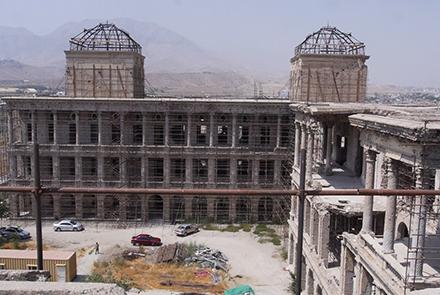The renovation of Darul Aman palace is not a difficult task, but engineers and architects need to accomplish the task professionally, said Sayed Zia Hussaini, director of Darul Aman reconstruction project.
He said the first phase of the reconstruction project has been wrapped up at a cost of $3 million dollars.
Several engineers and architects who are experts in renovating historical monuments are employed to restore the palace to its former glory.
The palace was built during the era of King Amanullah Khan, but was badly damaged during years of civil conflict in the country.
Experts say that ten types of bricks have been used in the construction of the palace as workers continue to rebuild the pillars inside the main hall. All bricks used in the palace are marked with the word ‘Amani’.
“Two of the roofs in the northern part of the palace were destroyed during bombings and the reconstruction of those parts need much attention. This is the only problem we have,” said Hussaini.
A team of experts comprising 40 architects and engineers, including 25 women, have been assigned to work on the project.
“We started mapping the designing process shortly after the cleaning process of the roofs and walls was completed,” said one engineer at the site Nastaran Bahar.
“25 percent of the project has been done by female engineers and they are busy with mapping, engineering and other related work,” Najma, another engineer said.
Experts have expressed hope that they will complete the project within three years.
Construction of the Darul Aman Palace initally began in the early 1920s as a part of the endeavors of King Amanullah Khan to modernize Afghanistan.
The palace is an imposing neoclassical building on a hilltop overlooking a flat, dusty valley in the western part of the Afghan capital. Designed by French and German architects, it was one of the first buildings in the country to get central heating and running water.


